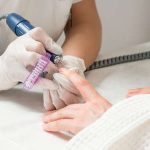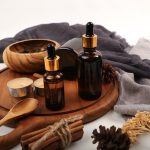Understanding Your Skin’s Needs After Cosmetic Procedures
After undergoing a cosmetic procedure—whether its laser treatment, microneedling, chemical peels, or injectables—your skin enters a healing phase. During this time, your skin becomes more sensitive and vulnerable to irritation, dehydration, and environmental stressors. That’s why its so important to choose skincare products specifically designed for post-procedure recovery.
Why Post-Procedure Skincare Matters
Post-procedure skincare isn’t just about pampering your skin—it plays a key role in how well your skin heals and how effective your treatment will be. Using the wrong products can lead to redness, breakouts, dryness, or even delay the healing process. On the other hand, using the right recovery-focused products can help:
- Reduce inflammation and redness
- Speed up the healing process
- Prevent infection or irritation
- Support the skin barrier function
- Enhance overall results from your procedure
How Your Skin Reacts After Different Procedures
Your skin’s needs will vary depending on the type of cosmetic treatment you’ve had. Here’s a quick overview of common procedures and their typical effects on the skin:
| Treatment Type | Common Skin Reactions | Main Skincare Needs |
|---|---|---|
| Chemical Peels | Peeling, redness, sensitivity | Soothe irritation, hydrate deeply, protect from sun exposure |
| Laser Resurfacing | Bluish tone, swelling, crusting | Mild cleansing, barrier repair, anti-inflammatory support |
| Microneedling | Puffiness, pinpoint bleeding, dryness | Avoid active ingredients, focus on hydration and calming agents |
| Dermal Fillers/Botox | Mild swelling or bruising at injection site | Avoid harsh ingredients, use gentle cleansers and SPF protection |
The Importance of a Gentle Approach
Your post-procedure skincare routine should be simple and gentle. Avoid strong actives like retinoids or acids unless advised by your provider. Stick with fragrance-free formulations that are dermatologist-tested and non-comedogenic. Look for ingredients like:
- Aloe Vera – for soothing and calming the skin
- Ceramides – to restore the skin barrier
- Hyaluronic Acid – for deep hydration without clogging pores
- Cica (Centella Asiatica) – known for its healing properties
Your Skin Is Unique—Listen to It!
No two recoveries are alike. Some people may bounce back in a couple of days; others might need a week or more. Pay attention to what your skin is telling you—tightness, flaking, heat—and adjust your routine accordingly. When in doubt, consult your aesthetic provider before trying any new product.
2. Key Ingredients to Look for in Post-Procedure Skincare
After a cosmetic procedure, your skin needs extra care to heal properly and stay protected. Choosing products with the right ingredients can make a big difference in how fast and comfortably your skin recovers. Heres a breakdown of some key ingredients that are especially helpful during the healing process.
Soothing Ingredients
Your skin may feel sensitive, red, or inflamed after treatments like chemical peels, laser therapy, or microneedling. Soothing ingredients help calm irritation and reduce redness.
| Ingredient | What It Does | Why Its Great Post-Procedure |
|---|---|---|
| Aloe Vera | Cools and soothes irritated skin | Helps relieve redness and discomfort |
| Centella Asiatica (Cica) | Anti-inflammatory and wound-healing properties | Speeds up recovery and reduces irritation |
| Chamomile Extract | Naturally calming and anti-inflammatory | Reduces itchiness and helps prevent further irritation |
Hydrating Ingredients
Procedures often leave your skin dry or dehydrated. Hydration is essential to keep your skin barrier strong and support healing.
| Ingredient | What It Does | Why Its Great Post-Procedure |
|---|---|---|
| Hyaluronic Acid | Binds water to the skin to increase hydration | Keeps the skin plump and supports the healing barrier |
| Glycerin | Draws moisture into the skin from the environment | Prevents dryness and flaking after procedures |
| Squalane | Mimics natural oils in your skin for lightweight moisture | Nourishes without clogging pores or causing breakouts |
Barrier-Reinforcing Ingredients
Your skin barrier may be compromised after treatment, making it more vulnerable to environmental damage. Strengthening this barrier is key to a smooth recovery.
| Ingredient | What It Does | Why Its Great Post-Procedure |
|---|---|---|
| Ceramides | Lipids that help restore the protective skin barrier | Prevents moisture loss and protects against irritants |
| Niacinamide (Vitamin B3) | Improves elasticity and strengthens the barrier function | Reduces redness while promoting even skin tone during healing |
Repairing Ingredients
If youre looking to speed up recovery while also supporting collagen production, these ingredients offer excellent benefits.
| Ingredient | What It Does | Why Its Great Post-Procedure | |||||||||||||||||||||||||||||||||||||||||||||||||||||
|---|---|---|---|---|---|---|---|---|---|---|---|---|---|---|---|---|---|---|---|---|---|---|---|---|---|---|---|---|---|---|---|---|---|---|---|---|---|---|---|---|---|---|---|---|---|---|---|---|---|---|---|---|---|---|---|
| Peptides | Amino acids that support collagen production and repair tissue damage |
| Ingredient | Why Its Harmful Post-Procedure |
|---|---|
| Alcohol (like denatured alcohol or ethanol) | Dries out the skin and disrupts the natural moisture barrier, increasing irritation. |
| Fragrance (synthetic or natural) | Can trigger allergic reactions or inflammation on sensitive, healing skin. |
| Essential Oils | Although natural, they can be highly sensitizing and cause redness or burning sensations. |
| AHAs/BHAs (like glycolic acid or salicylic acid) | Chemical exfoliants that can be too aggressive and interfere with skin renewal. |
| Retinoids (retinol, tretinoin) | Encourages cell turnover but may be too irritating for post-treatment skin. |
| Sulfates (like sodium lauryl sulfate) | Strips the skin of natural oils and weakens its protective barrier. |
How to Spot These Ingredients on Labels
Many of these harmful ingredients can hide under technical names. When reading product labels, watch for terms like “alcohol denat,” “parfum,” “limonene,” “linalool,” or acids ending in “-ic” such as “glycolic acid.” If youre unsure about an ingredient, its always a good idea to consult your dermatologist before using the product.
Pro Tip:
If you see a long list of ingredients you cant pronounce or recognize, thats often a red flag—especially when your skin is healing. Stick with simple formulations designed for sensitive or post-procedure care.
Avoiding these irritants will give your skin the calm environment it needs to repair itself faster and more effectively. The goal is to support healing, not stress your skin further with harsh chemicals.
4. Choosing the Right Products for Your Specific Procedure
After a cosmetic procedure, your skin’s needs can vary greatly depending on what treatment you received. Whether you had laser therapy, a chemical peel, or dermal fillers, using the right skincare products can make a huge difference in how well—and how quickly—you heal. Let’s break down what types of products to look for based on the kind of treatment you’ve had.
Laser Treatments
Laser treatments like fractional CO2 or IPL (Intense Pulsed Light) often leave skin sensitive, red, and dry. The goal is to reduce inflammation, speed up healing, and protect the skin barrier.
Recommended Product Types:
- Gentle Cleansers: Fragrance-free and sulfate-free to avoid irritation.
- Hydrating Serums: Look for ingredients like hyaluronic acid or panthenol.
- Barrier Repair Creams: Ceramides and peptides help rebuild the skin barrier.
- Broad-Spectrum Sunscreen: SPF 30+ is essential to protect healing skin from UV damage.
Chemical Peels
Chemical peels exfoliate the top layers of the skin, which can cause peeling, sensitivity, and dryness. The focus here is on soothing and hydrating while avoiding active ingredients that may irritate newly exposed skin.
Recommended Product Types:
- Mild Moisturizers: Non-comedogenic and formulated for sensitive skin.
- Aloe Vera Gel or Thermal Water Sprays: To calm redness and irritation.
- No Exfoliants or Retinoids: Avoid until your provider gives the green light.
Injectables (Fillers & Botox)
Injectable treatments usually have minimal downtime but can cause swelling or bruising at the injection sites. The goal is to reduce inflammation and support overall skin health without interfering with the treatment results.
Recommended Product Types:
- Arnica Gel or Cream: Helps minimize bruising.
- Cooling Gels: To soothe any post-injection tenderness.
- Nourishing Moisturizers: Hydrate without clogging pores or adding irritation.
Treatment-Specific Skincare Summary
| Treatment Type | Main Skin Concerns | Recommended Products |
|---|---|---|
| Laser Therapy | Sensitivity, Redness, Dryness | Gentle cleanser, hydrating serum, barrier cream, SPF |
| Chemical Peels | Irritation, Peeling, Dryness | Mild moisturizer, aloe vera gel, avoid actives |
| Fillers/Botox | Slight Swelling or Bruising | Arnica gel, cooling gel, nourishing moisturizer |
No matter what procedure youve had done, always follow your provider’s specific aftercare instructions. Pairing that guidance with the right skincare products will help you recover comfortably and maintain long-lasting results.
5. Building a Simple Yet Effective Post-Procedure Skincare Routine
After a cosmetic procedure, your skin is in a sensitive state and needs extra care to heal properly and maintain the results of your treatment. Creating a gentle, nourishing skincare routine can make a big difference in how your skin recovers. Heres a step-by-step guide to building an effective post-procedure skincare regimen that fits into your daily life.
Step 1: Keep It Gentle
Your skin barrier is likely compromised after procedures like laser treatments, microneedling, or chemical peels. Choose products with minimal ingredients—free from fragrances, alcohol, and harsh chemicals—to avoid irritation.
Ingredients to Look For:
| Soothing Ingredient | Benefits |
|---|---|
| Aloe Vera | Cools and calms irritated skin |
| Centella Asiatica | Promotes wound healing and reduces inflammation |
| Colloidal Oatmeal | Soothes itching and redness |
| Panthenol (Vitamin B5) | Hydrates and supports skin repair |
Step 2: Cleanse With Care
Use a non-foaming, sulfate-free cleanser to gently remove impurities without stripping your skin. Avoid hot water—lukewarm is best—and pat dry with a clean towel instead of rubbing.
Step 3: Hydrate & Repair
A lightweight, fragrance-free moisturizer helps lock in moisture and protect the healing skin barrier. Look for ceramides or hyaluronic acid to support hydration without clogging pores.
Step 4: Protect With Sunscreen
This step is critical. Your skin is more vulnerable to sun damage after procedures. Choose a broad-spectrum mineral sunscreen with SPF 30 or higher. Reapply every two hours if youre outdoors.
Sunscreen Tips:
- Select zinc oxide or titanium dioxide-based formulas—theyre less irritating on sensitive skin.
- Avoid tinted or fragranced options unless approved by your provider.
Step 5: Follow Your Providers Instructions
Your aesthetic provider may recommend specific products tailored to your treatment type. Always follow their advice first, especially if they prescribe any topical medications or healing balms.
A Sample Routine You Can Follow:
| Time | Product Type | Description |
|---|---|---|
| Morning | Mild Cleanser | Cleanses without disrupting the skin barrier |
| Nourishing Moisturizer | Adds hydration and supports healing | |
| Mineral Sunscreen (SPF 30+) | Covers all exposed areas for UV protection | |
| Evening | Mild Cleanser | Cleans away the days buildup gently |
| Nourishing Moisturizer or Healing Balm | Aids overnight recovery and soothes the skin |
Simplicity is key when it comes to post-procedure skincare. Stick to gentle, hydrating products and give your skin time to recover while protecting it from irritants and environmental stressors.



